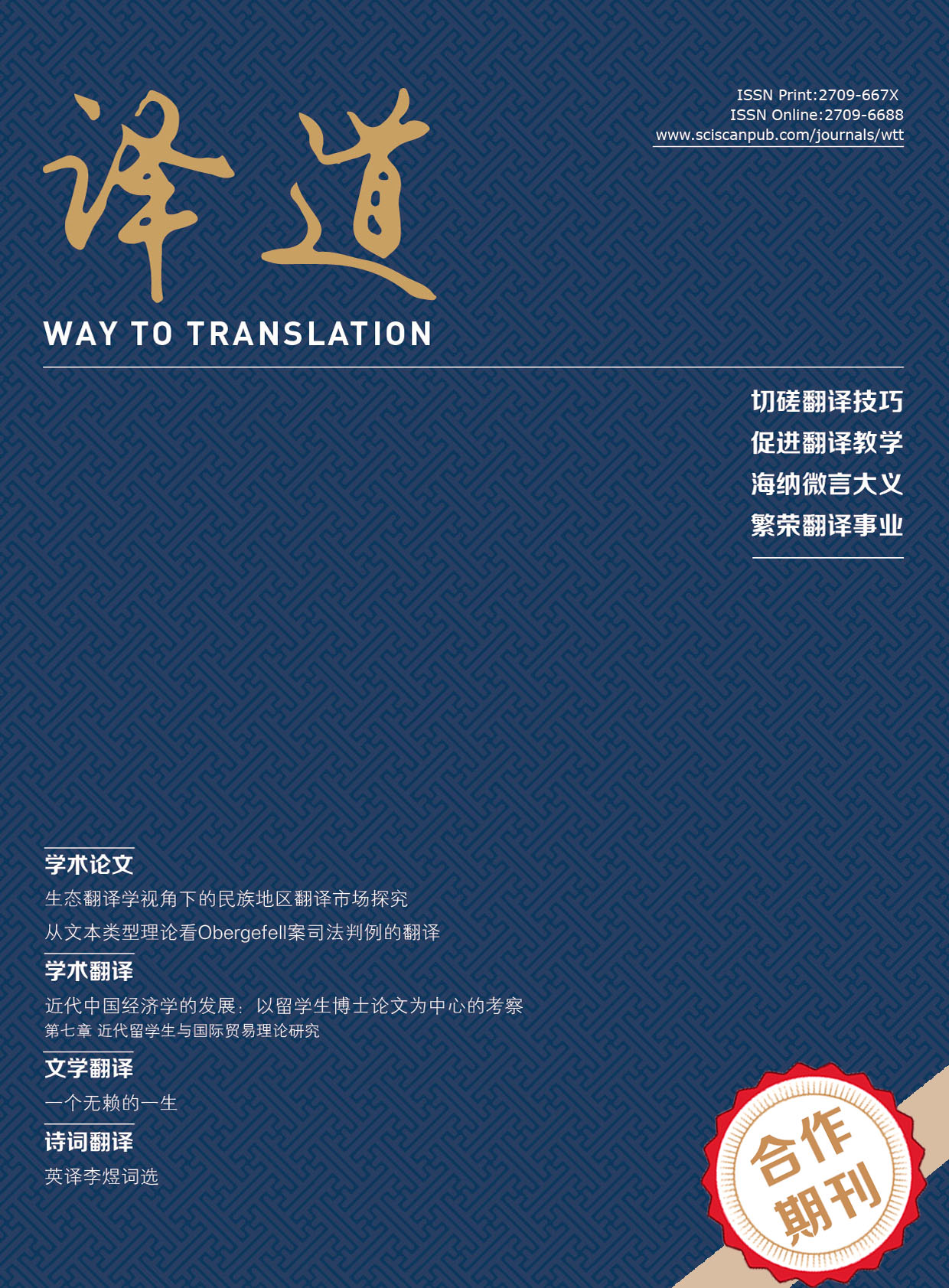Way to Translation
ISSN Print: 2709-667X
ISSN Online: 2709-6688
Contact Editorial Office
Subscribe to the latest published information from SCISCAN
“最后贷款人”理论的概念隐喻分析 ——以Bernanke《金融的本质》为例
A Conceptual Metaphor Analysis of the Lender of Last Resort Theory by Bernanke’s The Federal Reserve and the Financial Crisis
- Authors: 胡青莲
-
Information:
中南财经政法大学外国语学院,武汉
-
Keywords:
Conceptual Metaphor; Lender of Last Resort; The Federal Reserve and the Financial Crisis概念隐喻; 最后贷款人; 《金融的本质》
- Abstract: This paper analyses the lender of last resort theory in Bernanke’s economic work The Federal Reserveand the Financial Crisis from the perspective of conceptual metaphors. It finds that the conceptual metaphormodel of the theory is mainly based on the Economy as a Machine and the Economy as an Organism. Based onthis, Bernanke reasoned that when a machine or organism has an internal problem, it needs to be repaired byan external force. This is projected onto the financial system as the need for central banks to artificially repairand bail out the financial system, which advocates government intervention and regulation of the financialmarket. Some scholars have related to Bernanke’s view, and they also reasoned the Economy as a Machine andthe Economy as an Organism. However, they believed that machines can repair themselves and organisms canregulate their internal order, advocating the dominant role of the market’s regulation. The analysis shows thatconceptual metaphors play a central role and reveal the cognitive basis in the construction of economic thought.It suggests that economic research should not be overly formalized, but should also pay attention to the mode ofconstruction of concepts in economic thought. 本文从概念隐喻的角度对伯南克(Bernanke)的经济著作《金融的本质》中的“最后贷款人”理论进行了分析,发现该理论的概念隐喻模式主要建立于经济学中的两个基本概念隐喻,即“经济是机器”和“经济是有机体”。基于此,根据Bernanke的观点推理,当机器或有机体内部出现问题时,需要外力加以修复,投射到金融系统上则是中央银行需对金融系统进行人工修复和救助,主张政府干预和调节金融市场。有学者与Bernanke的观点相关,推理的概念隐喻模式也是“经济是机器”和“经济是有机体”,但依据他们的观点推理出的是机器可自行修复、有机体可自行调节内部秩序,主张市场自身调节的主导作用。分析表明,经济思想的建构中概念隐喻起到核心作用,揭示了经济思想建构的认知基础并提示经济研究中不应过于形式化,还应关注经济思想中概念的建构模式。
- DOI: https://doi.org/10.35534/wtt.0401003
- Cite: 胡青莲.“最后贷款人”理论的概念隐喻分析 ——以Bernanke《金融的本质》为例[J].译道,2024,4(1):18-30.
















